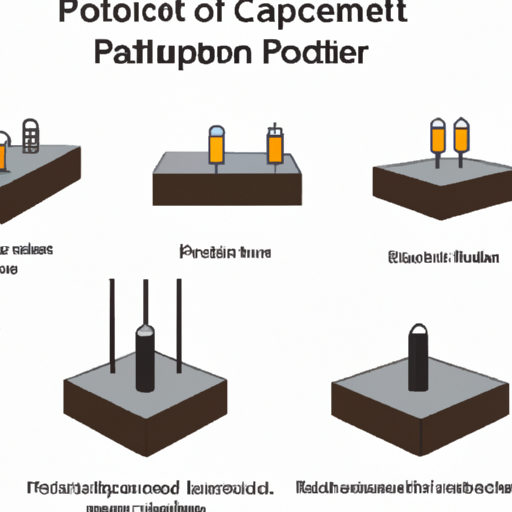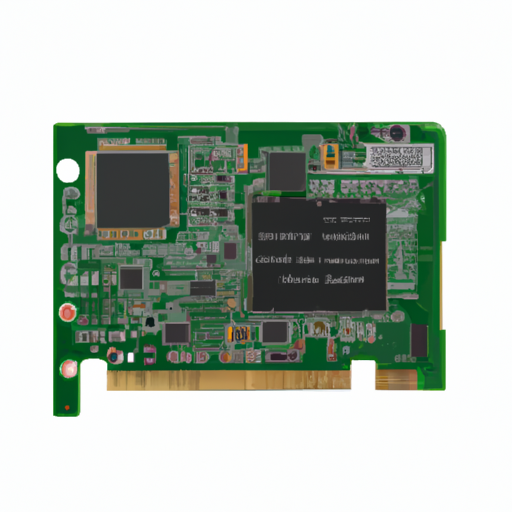What are the popular models of capacitor principle?
What are the Popular Models of Capacitor Principle?
I. Introduction
Capacitors are fundamental components in electrical and electronic circuits, serving a variety of essential functions. Defined as passive electronic components that store electrical energy in an electric field, capacitors play a crucial role in filtering, timing, and coupling applications. This article aims to explore the popular models of capacitor principles, delving into their basic functions, types, mathematical representations, and applications in modern technology.
II. Basic Principles of Capacitors
A. Explanation of Capacitance
Capacitance is the ability of a capacitor to store charge per unit voltage. It is defined mathematically as:
\[ C = \frac{Q}{V} \]
where \( C \) is the capacitance in Farads (F), \( Q \) is the charge stored in coulombs (C), and \( V \) is the voltage across the capacitor in volts (V). The unit of capacitance, the Farad, is quite large, so capacitors are often measured in microfarads (µF), nanofarads (nF), or picofarads (pF).
Several factors affect capacitance, including the surface area of the plates, the distance between them, and the type of dielectric material used. A larger plate area increases capacitance, while increasing the distance between plates decreases it. The dielectric material, which is an insulating substance placed between the plates, also influences capacitance by affecting the electric field strength.
B. The Role of Electric Fields in Capacitors
When a voltage is applied across a capacitor, an electric field is established between the plates, causing positive and negative charges to accumulate on opposite plates. This electric field is crucial for the capacitor's ability to store energy, which can be released when the circuit requires it.
C. Charging and Discharging Processes
The charging process involves the flow of current into the capacitor, causing it to accumulate charge until it reaches the applied voltage. Conversely, discharging occurs when the stored energy is released back into the circuit, allowing the capacitor to return to its uncharged state. The time it takes for a capacitor to charge or discharge is characterized by the time constant, denoted as \( \tau \), which is the product of resistance (R) and capacitance (C):
\[ \tau = R \times C \]
III. Types of Capacitors
Capacitors come in various types, each with unique characteristics and applications.
A. Electrolytic Capacitors
Electrolytic capacitors are polarized capacitors that use an electrolyte as one of their plates. They are known for their high capacitance values and are commonly used in power supply applications. However, they have limitations, such as a relatively short lifespan and sensitivity to voltage polarity.
B. Ceramic Capacitors
Ceramic capacitors are non-polarized capacitors made from ceramic materials. They are available in two classes: Class 1 (temperature stable) and Class 2 (high capacitance but less stable). Ceramic capacitors are widely used in high-frequency applications due to their low equivalent series resistance (ESR).
C. Film Capacitors
Film capacitors are constructed using thin plastic films as dielectrics. They are known for their stability, low ESR, and high insulation resistance. Common types include polyester and polypropylene capacitors, each with specific advantages and disadvantages, such as size and cost.
D. Tantalum Capacitors
Tantalum capacitors are known for their high capacitance and reliability. They are constructed using tantalum metal and are often used in compact electronic devices. However, they can be expensive and are sensitive to voltage spikes.
E. Supercapacitors
Supercapacitors, also known as ultracapacitors, bridge the gap between traditional capacitors and batteries. They can store large amounts of energy and are used in applications requiring rapid charge and discharge cycles, such as energy storage systems and regenerative braking in electric vehicles.
IV. Mathematical Models of Capacitors
A. Ideal Capacitor Model
The ideal capacitor model is a simplified representation that assumes perfect behavior. The fundamental equation governing an ideal capacitor is:
\[ Q = C \times V \]
This model implies that the capacitor will charge and discharge instantaneously without any losses, which is not the case in real-world applications.
B. Non-Ideal Capacitor Model
In reality, capacitors exhibit non-ideal behavior due to factors like equivalent series resistance (ESR) and equivalent series inductance (ESL). ESR represents the resistive losses in the capacitor, while ESL accounts for the inductive effects that become significant at high frequencies. These factors can lead to energy loss and affect the performance of capacitors in circuits.
C. Frequency Response Models
Capacitors behave differently in alternating current (AC) circuits compared to direct current (DC) circuits. The impedance of a capacitor in an AC circuit is given by:
\[ Z = \frac{1}{j \omega C} \]
where \( j \) is the imaginary unit and \( \omega \) is the angular frequency. This relationship highlights how capacitors can block DC while allowing AC to pass, making them essential in filtering applications.
V. Advanced Capacitor Models
A. SPICE Models
SPICE (Simulation Program with Integrated Circuit Emphasis) is a widely used simulation tool in circuit design. Capacitors can be modeled in SPICE using various parameters, allowing engineers to simulate their behavior in complex circuits. This modeling helps predict performance and optimize designs before physical implementation.
B. Behavioral Models
Behavioral modeling involves creating mathematical representations of a capacitor's behavior based on empirical data. These models can capture non-ideal characteristics and provide a more accurate representation of a capacitor's performance in specific applications, offering advantages over traditional models.
C. Temperature and Voltage Coefficient Models
Capacitance can vary with temperature and applied voltage. Temperature coefficient models account for changes in capacitance due to temperature fluctuations, while voltage coefficient models address how capacitance changes with varying voltage levels. Understanding these coefficients is crucial for designing reliable circuits that operate under varying environmental conditions.
VI. Applications of Capacitor Models
A. Power Supply Filtering
Capacitors are essential in power supply circuits for smoothing voltage fluctuations. They act as filters, reducing ripple voltage and providing a stable output. Design considerations include selecting the appropriate capacitance value and ESR to ensure effective filtering.
B. Timing Circuits
In timing circuits, capacitors work in conjunction with resistors to create time delays. The RC time constant determines how quickly a capacitor charges or discharges, making it a critical component in oscillators and timers used in various applications, from clocks to signal generators.
C. Signal Coupling and Decoupling
Capacitors are used for coupling and decoupling signals in audio and radio frequency (RF) applications. Coupling capacitors allow AC signals to pass while blocking DC, while decoupling capacitors stabilize voltage levels by providing a local energy reservoir. Effective design strategies ensure optimal performance in these applications.
VII. Conclusion
In summary, capacitors are vital components in electrical and electronic circuits, with various models representing their principles and behaviors. From basic capacitance concepts to advanced modeling techniques, understanding capacitors is essential for engineers and designers. As technology evolves, the role of capacitors continues to expand, with innovations in materials and designs paving the way for future applications. The ongoing development of capacitor technology promises to enhance performance and efficiency in a wide range of electronic devices.
VIII. References
For further exploration of capacitor principles and applications, consider the following resources:
1. "The Art of Electronics" by Paul Horowitz and Winfield Hill
2. "Capacitors: Technology and Applications" by John W. McCulloch
3. IEEE papers on capacitor modeling and applications
4. Online resources and tutorials on SPICE simulation and circuit design
By understanding the principles and models of capacitors, engineers can design more efficient and reliable electronic systems, contributing to advancements in technology and innovation.







